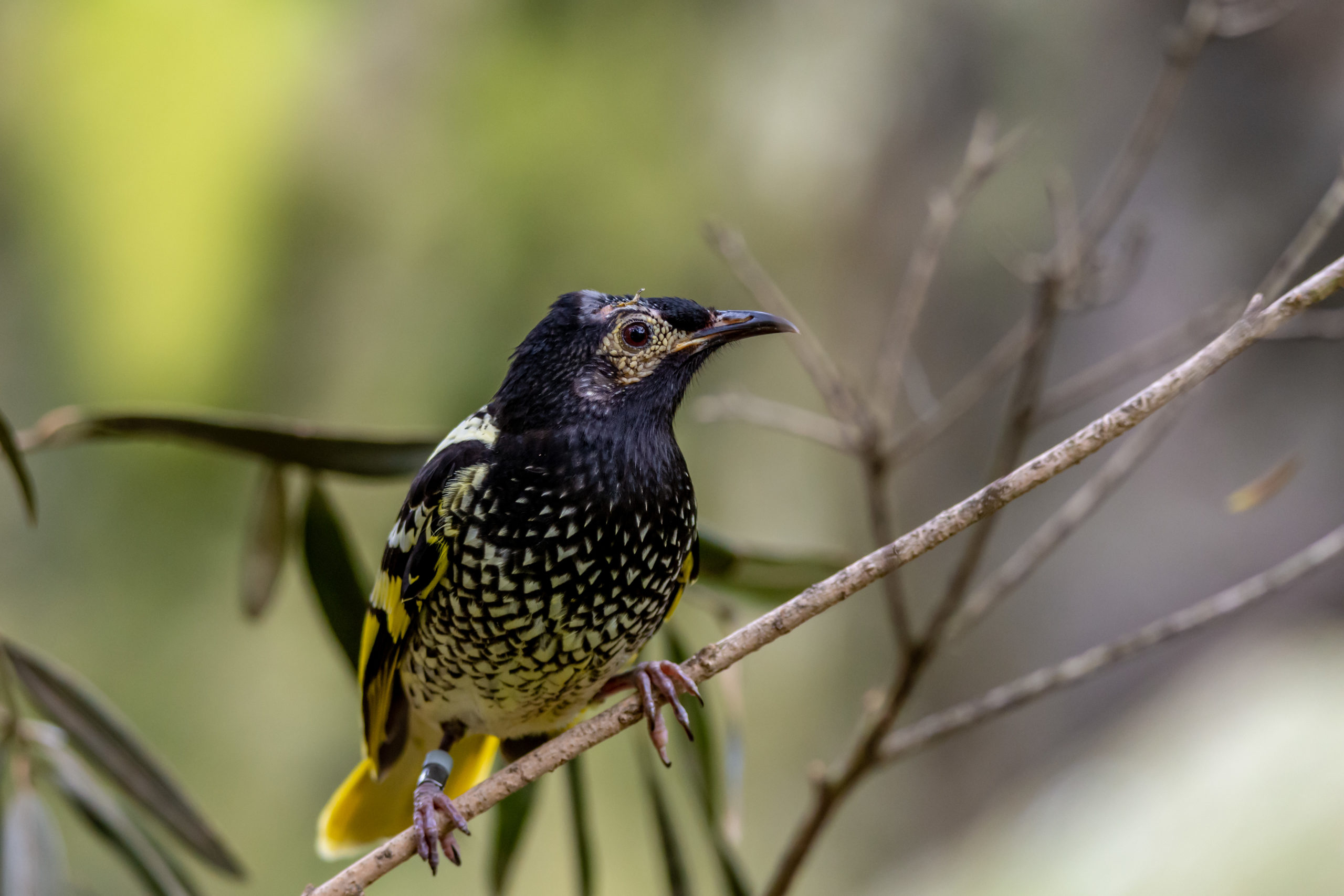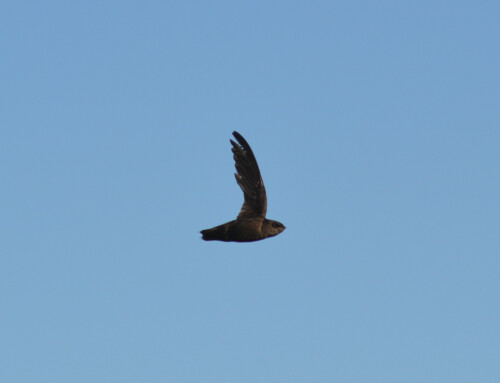LINKED PAPER
Contemporary breeding biology of critically endangered Regent Honeyeaters: implications for conservation. Crates, R., Rayner, L., Stojanovic, D., Webb, M., Terauds, A., & Heinsohn, R. 2019. IBIS. DOI: 10.1111/ibi.12659 VIEW
The International Union for Conservation of Nature (IUCN) lists almost 700 bird species as endangered or critically endangered. Each species requires specific conservation measures to ensure its future existence. So, it is crucial to understand the direct causes of population decline to properly intervene. The Regent Honeyeater (Anthochaera phrygia), for example, is a critically endangered bird endemic to southeastern Australia. The population has declined rapidly since the 1960s, resulting in a current population size of 350-400 individuals (Kvistad et al. 2015). This decline has been attributed to severe habitat loss, namely the clearing of box-gum-ironbark woodlands (Ford et al. 2001). A recent survey uncovered other threats for the Regent Honeyeater, namely high levels of nesting failure and a biased sex ratio.
Nest success
A team of Australian ornithologists searched for Regent Honeyeaters over three breeding seasons (2015-2017). During this endeavor 119 nests were discovered of which 51 turned out to be successful. The number of successful nests varied between regions, but overall the nesting success was markedly lower (9-34%) than previous estimates (Oliver et al. 1998). The main reason of nest failure was predation by birds, such as Pied Currawongs (Strepera graculina) and Noisy Miners (Manorina melanocephala), and mammals, such as Brush-tailed Possum (Thrichosurus vulpecula) and Sugar Glider (Petaurus breviceps). Nest survival was partly influenced by the position of the nest in the tree. Regent Honeyeaters build open-cup nests in the outer branches of large trees (Franklin et al. 1989). Because of habitat loss, the availability of these nesting sites is limited, forcing birds to choose suboptimal nesting locations. Moreover, Regent Honeyeaters are often outcompeted by larger Honeyeater species during nest construction. This finding indicates that habitat restoration is urgently needed.
Figure 1 The survey covered several sites across southeastern Australia. The colors correspond to sampling effort in Regent Honeyeaters in 2015 (orange), 2016 (yellow) and 2017 (blue). The numbers between parentheses indicate the amount of nests, juveniles, nest success probability.
Sex ratio
The survey also uncovered a sex ratio that is biased toward males. This skewed ratio means that about one in six males is unable to find a mate. The lack of females limits the chances of population recovery for the Regent Honeyeater. There might be 350-400 individual birds, but the effective population size (i.e. the birds contributing to the next generation) is only 100 pairs. This low number of breeding pairs could be supplemented with captive breeding. Unfortunately, captive-bred Regent Honeyeaters have an ever lower rate of nest success (Taylor et al. 2018). Saving this endemic species will thus require an intensive management approach, aimed at restoring suitable habitat and reducing nest predation.
References
Ford, H. A., Barrett, G. W., Saunders, D. A., & Recher, H. F. (2001). Why have birds in the woodlands of southern Australia declined?. Biological Conservation 97: 71-88. VIEW
Franklin, D. C., Menkhorst, P. W., & Robinson, J. L. (1989). Ecology of the regent honeyeater Xanthomyza phrygia. Emu 89: 140-154. VIEW
Kvistad, L., Ingwersen, D., Pavlova, A., Bull, J. K., & Sunnucks, P. (2015). Very low population structure in a highly mobile and wide-ranging endangered bird species. PloS one 10: e0143746. VIEW
Oliver, D. L., Ley, A. J., & Williams, B. (1998). Breeding success and nest site selection of the Regent Honeyeater Xanthomyza phrygia near Armidale, New South Wales. Emu 98: 97-103. VIEW
Taylor, G., Ewen, J. G., Clarke, R. H., Blackburn, T. M., Johnson, G., & Ingwersen, D. (2018). Video monitoring reveals novel threat to Critically Endangered captive-bred and released Regent Honeyeaters. Emu 118: 304-310. VIEW
Image credits
Featured image: Regent Honeyeater Anthochaera phrygia | Jss367 | CC BY-SA 4.0 Wikimedia Commons






